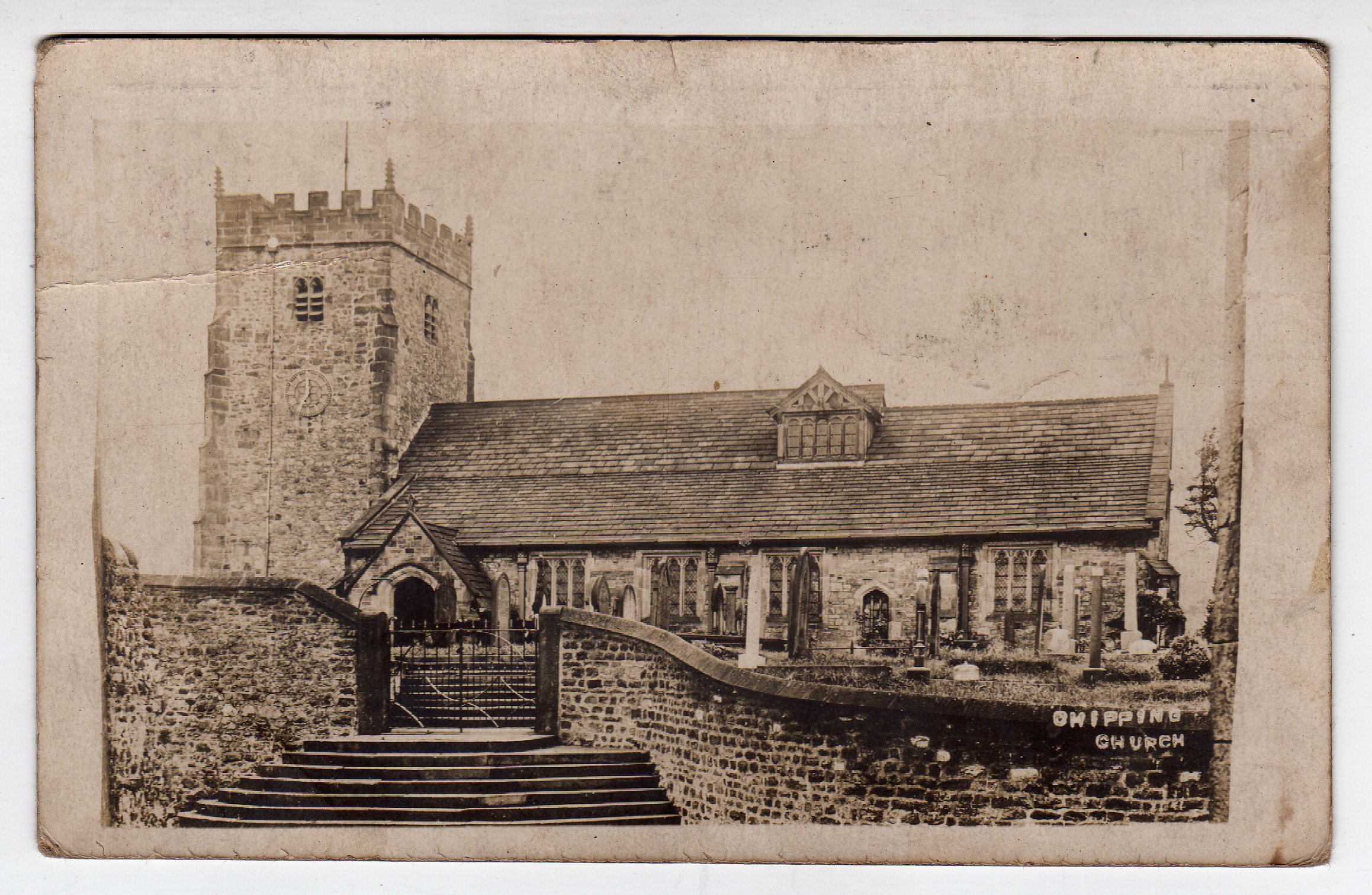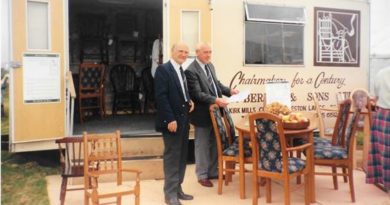St. Bartholomew’s Church, Chipping
A Church with many hundreds of years of history, St. Bartholomews is, of course, an integral part of Chipping’s history and also has been connected with the crafts and skills practiced at Kirk Mill as well as the people who have owned, managed and worked at the mill over the last 500 years.
These notes are taken from Reverend Thomas Green’s “Saint Bartholomew’s Church, Chipping – Historical Notes, 1976”. Reverend Green in turn acknowledges the assistance of Mr Frank Berry for his ‘copious notes’ and Mrs George Bleasdale for making her husband’s ‘jottings’ available (See some of those ‘jottings’ here). A copy of Reverend Green’s notes was made available to Kirk Mill Heritage Hub by Belle Slinger. Many thanks to Belle!
Reverend Green starts his notes by suggesting how far back St. Bartholomew’s Church dates. ‘Chipping’ means ‘market’ and it is presumed it was a significant market as other places including the name ‘Chipping’ also include qualifiers – places such as Chipping Norton and Chipping Sodbury. Chipping in Lancashire is the only place so named in England. A medieval document states that in 597 AD, the number of believers in the area had necessitated the establishment of a ‘Church of Chepen’ and that by 1040, Chipping became a parish in its own right. At this time, the area of Chipping would have been marshy, as local names like Blackmosse and Moss Side testify and the elevated position of St. Bartholomew’s was the perfect location for both Church and Market.
Initially the Church building itself would have been made of wattle or mud and when it had to be rebuilt, the same materials would have been used. It is known that St. Bartholomew’s was rebuilt in 1506 and again in 1873. The first known documented reference to Kirk Mill is in 1544 although historian Mike Rothwell has suggested the water corn mill then operating at Kirk Mill probably dated back some 2 or 3 centuries previous to that. Both Kirk Mill and St. Bartholomew’s church have witnessed the evolution of community in Chipping for many hundreds of years.
While the church has a significant history, changes and modifications have been made through time, most notably in 1873 when rebuilding saw some major updates. In 1967, however, the east window in the Wolfhouse Quire was given in memory of John Berry of Berry’s chairworks. “It incorporates the tools of chairmaking, the two ancient sources of power, water and fire and symbolic representations of the Passion of Christ. The Ten Commandments Board is a memorial to Thomas Harold Berry, Chairmaker, who died in 1942.” Furthermore, “the Bishop’s chair and the other Sanctuary chairs were made locally in the Lancashire spindle-back design”. Presumably ‘made locally’ means at Berry’s chairworks?
How much of the rest of the wood carvings and woodwork were done thanks to the skills of Berry’s joiners and furniture makers? Certainly, in the earlier days of the chair works right up until after World War II, Berry’s chair makers were also the local undertakers and Berry’s workers made coffins for members of the congregations of both St. Bartholomew’s and St. Mary’s. Geoff Marsden has described how he used to have to lay out the deceased and measure them up for their coffin, which he would have to make. He would dig the graves and cover the them over again after the burial ceremonies.
If you would like to add information about St. Bartholomew’s Church and the ways in which the history of the church is interconnected with that of Kirk Mill, please let us know so we can add the information. Thank you!!

